Understand 8 material testing machines
| Material testing machine is a precision test instrument for measuring the mechanical properties, process properties, internal defects and dynamic unbalance of rotating parts in various conditions and environments. In the process of researching and exploring new materials, new processes, new technologies and new structures, material testing machine is an indispensable and important testing instrument. It is widely used to test and analyze the static properties of metal and non-metal (including composite materials) such as stretching, compression, bending, shearing, stripping, tearing, load holding, relaxation, reciprocating and so on. |
The material testing machine can be divided into static load testing machine (static) and dynamic load testing machine (dynamic) according to the loading method.
Static testing machine
1、universal testing machine
Including hydraulic universal testing machine and electronic universal testing machine, double screw series, control, measurement, operation integrated structure into the modern advanced technology, with high precision, wide speed range, compact structure, easy operation, stable performance and other advantages.
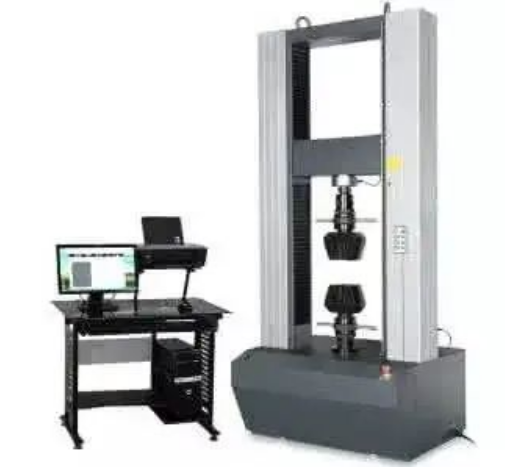
FIG. 1 Electronic universal testing machine
Applicable materials: rubber, plastic, film, adhesive, steel bar, glass, touch screen, textile, waterproof material, wire and cable, net rope, wire, metal rod, metal plate and other photovoltaic materials and clothing industry
Test items: tensile stress, tensile strength, constant extension stress, elongation at constant stress, breaking strength, elongation after breaking, yield strength, elongation at yield point, tensile stress at yield point, tear strength, peel strength, puncture strength, bending strength, elastic modulus, etc.
2、compression-testing machine
Pressure testing machine is also called electronic pressure testing machine。
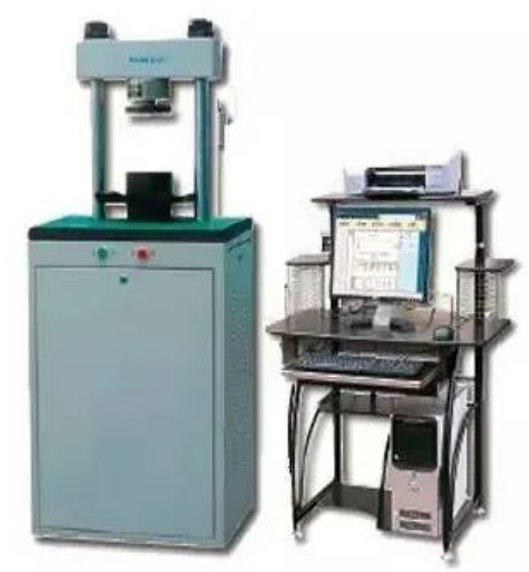
Figure 2. Pressure testing machine
Applicable materials: rubber, plastic sheet, pipe, profile, plastic film, wire and cable, waterproof coil, metal wire, carton and other materials
Test items: compression test, tensile test
Tensile test (stress-strain test) is generally the two ends of the material sample are clamped on two fixtures at a certain distance, the two fixtures separate and stretch the sample at a certain speed, and the stress change on the sample is measured until the sample is damaged.
Part structure:
- Temperature sensing rod: rotary thermocouple, temperature measurement sensitive, uniform, high precision.
Heater: Rotary heater, high power, fast heating and strong durability.
Column copper sleeve: made of brass, wear-resistant and no resistance.
Power system: Special motor is used to make the operation smooth, accurate and no dryness.
Safety protection: with emergency protection device, in case of emergency can make the machine stop or reverse.
3、tensile testing machine
Same? as universal testing machine.
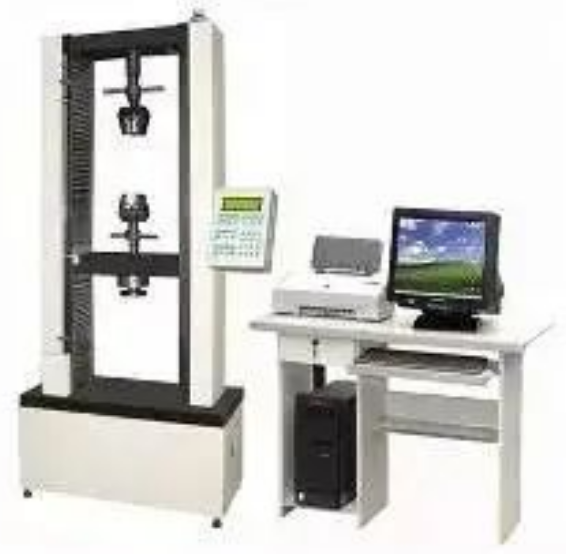
Figure 3 Tensile testing machine
Applicable materials: plastic sheet, pipe, profile, plastic film and rubber, wire and cable, steel, glass fiber and other materials
Test items: static load, tensile, compression, bending, shearing, stripping and other mechanical properties.
4、torsion testing machine
Torsion testing machine is divided into spring torsion testing machine, wire torsion testing machine and material torsion testing machine.
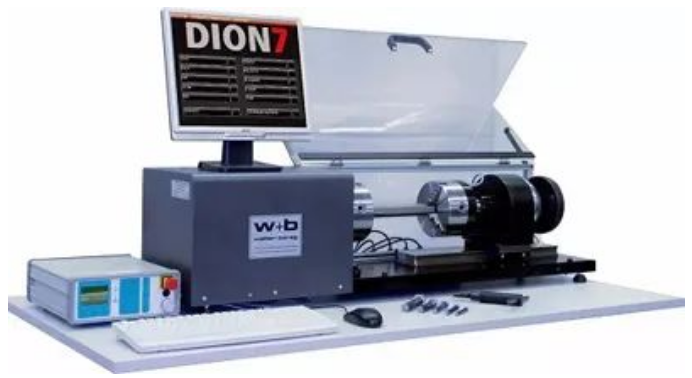
FIG. 4 Torsion testing machine
Applicable materials: metal and non-metal and parts, etc.
The metal wire torsion testing machine is suitable for measuring the ability of metal wire with a diameter (or characteristic size) of 0.1-10.0mm to withstand plastic deformation in unidirectional or bidirectional torsion and showing the defects on the surface and inside of the wire.
Test items: torsional performance test, maximum torque, torsional strength, upper yield strength and lower yield strength.
5、creep tester
The creep endurance testing machine is divided into mechanical type and electronic type according to structure and principle; The mechanical type is the traditional product, and the electronic type is a new product developed in recent years.
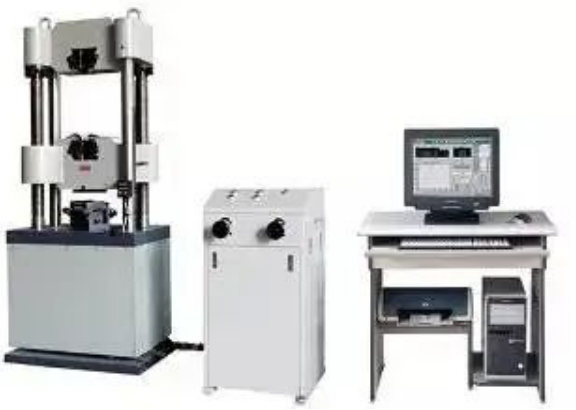
FIG. 5 Creep testing machine
Applicable materials: metal, non-metal materials, etc
Test items: tensile, compressive endurance, creep, relaxation test and low cycle fatigue and creep fatigue test.
Dynamic testing machine
1. Dynamic and static universal testing machine
The main machine of dynamic and static universal testing machine adopts double column structure, the maximum static load is 5KN, the maximum dynamic load is 2.5KN, and the measuring range is 2-100%.
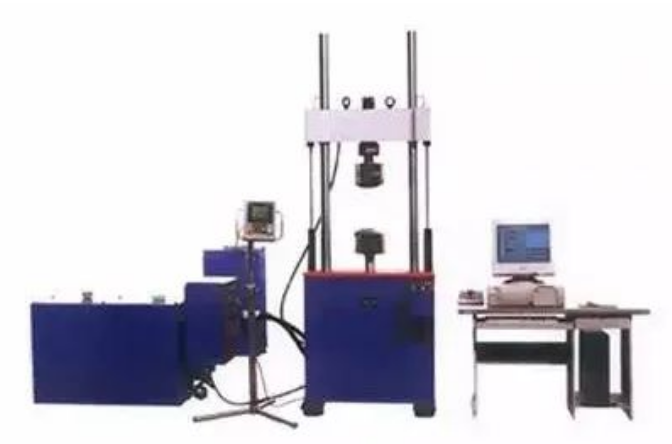
Figure 6 WS-100 electro-hydraulic servo dynamic and static universal testing machine
Functional features:
(1) The main machine adopts double column structure;
(2) symmetric cyclic fatigue tests should be carried out on metal and non-metallic materials. At the same time, it can also carry out static tensile and other related tests;
(3) The measurement and control system adopts AD850 universal test card and ATOS servo valve, which can realize the automatic control of the whole process of the test and all keyboard operation;
(4) With load, displacement, deformation three control modes and smooth conversion function between control modes, automatic acquisition and processing of test data, draw test curve, print test report
Applicable materials: various materials, parts, elastomers, rubber elastomers and shock absorbers, etc
Test items: tensile, compression, bending, low cycle and high cycle fatigue, crack propagation, fracture mechanics test
fatigue machine
Fatigue testing machine is a machine that can test fatigue in various ways. According to the test frequency, it can be divided into low-frequency fatigue testing machine, medium-frequency fatigue testing machine, high-frequency fatigue testing machine and ultra-high-frequency fatigue testing machine.
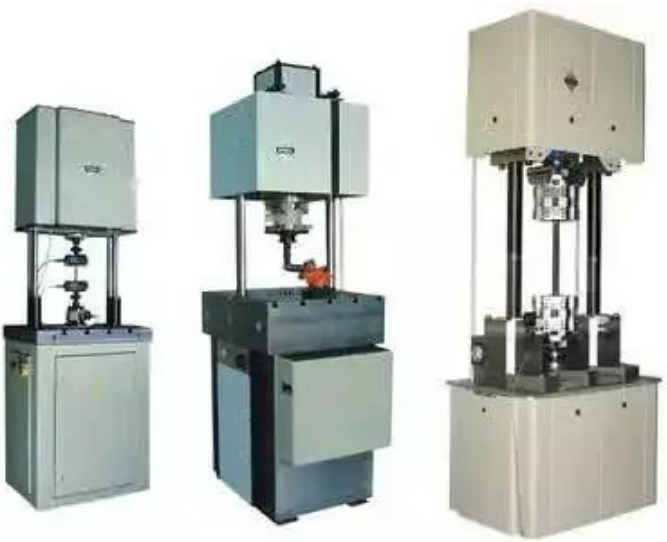
Figure 7. High frequency fatigue testing machine
Applicable materials: metal, alloy materials and components (such as operating joints, solid joints, spiral motion parts, etc.)
Test items: Fatigue characteristics, fatigue life, prefab crack and crack propagation tests at room temperature under tensile, compression or alternating tension and pressure loads
Note: The fatigue test of composite materials can not be carried out with electromagnetic high-frequency fatigue testing machine, because the electromagnetic type is driven by the principle of electromagnetic resonance, and is related to the rigidity of the sample, so the composite material can only be driven by the motor fatigue test.
impact tester
Impact testing machine (English name: impacttesting machine) refers to the material testing machine that exerts impacttest force on the sample and carries out impacttest. Impact testing machine is divided into manual pendulum impact testing machine, semi-automatic impact testing machine, digital impact testing machine, microcomputer control impact testing machine, drop weight impact testing machine and non-metal impact testing machine.
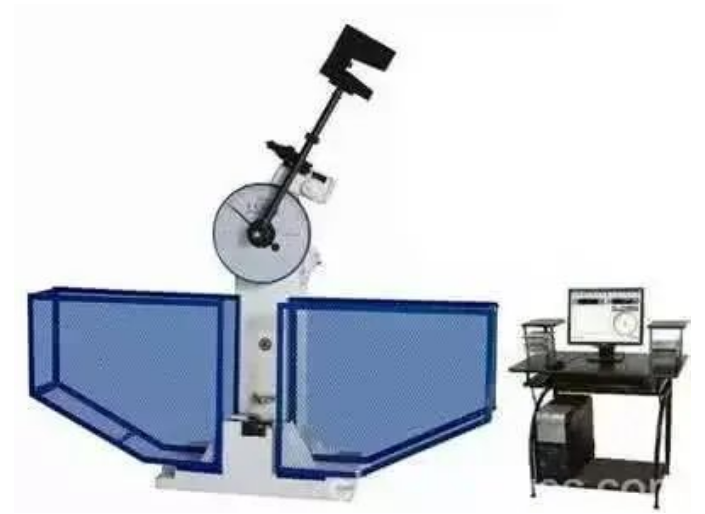
Figure 8 Impact testing machine
Applicable materials: metal, non-metal materials
Test item: impact test
Scope of application:
(1) Material selection and new material development; (2) metallurgical product inspection and control; (3) process quality supervision; (4) Toughness assessment under various conditions; (5) One of the important indicators of metallurgical product delivery.
Guangzhou Meiyifeng Test Equipment Co., Ltd. is located in the beautiful Lotus Mountain corner of Guangzhou, is a set of laboratory equipment, system engineering research and development, manufacturing, sales, service as one of the professional high-tech enterprises. The main production of temperature and humidity, acoustics, optics, electricity, mechanics and product reliability testing test equipment, the division with advanced processing equipment, superb manufacturing technology, strict management system, strong technical strength and good after-sales service to meet the different needs of customers. Products comply with GB, GJB, ASTM, DIN, JIS, CNC, UL, MIL, IEC, ISO and other standards, but also according to customer requirements design, development, manufacturing non-standard products.
We hope to share our knowledge and new technologies in these fields with you, and we welcome your questions. ??
Every expert of Guangzhou Meiyifeng test equipment is our think tank, you can read the opinions of experts from different directions of Guangzhou Meiyifeng test equipment in this account. Please do not begrudge the “invitation” in your hand, let us make progress together in sharing.
We also welcome you to pay attention to us and learn more about us.
Give it a thumbs up when you see it!

]]>
Handheld meter
The most widely used instruments are handheld instruments, which usually include clamp meters and multimeters. The clamp meter is widely used because of its easy operation. Multimeters are also popular because they are easy to carry and can perform a wide variety of measurement ranges. These units have a large number of accessories available, so they can be used to measure light levels, temperature and other variables to further expand their use for electricians. Most of them can provide digital or analog readings, and the choice depends largely on the user’s personal preferences and accuracy requirements.
Both clamp meter and multimeter can be of average response or true effective value type. The true RMS unit responds to the effective heat generation of the AC waveform. The averager calculates the arithmetic average of the waveform. When the signal to be measured is close to a pure sine wave, an average response meter or a true effective value meter can be used with reasonable accuracy. However, if the waveform is distorted (for example, common in circuits that supply phase-to-neutral and phase-to-non-linear loads), true rms sensing devices are preferred because the readings will be more accurate。
Portable test equipment
Megaohmmeters, including special versions for determining the resistance of grounding systems, are also widely used. They can be shaken manually or battery powered, and have various levels of complexity.
Facts have proved that recording instruments are very helpful for long-term analysis of system parameters (such as current, voltage, electrical noise, waveform, etc.). Devices of this type range from relatively simple dot matrix printers to high-speed computer units.
As more and more nonlinear loads become the norm in today’s offices and factories, harmonic analyzers have become extremely important.
Thermal measuring instruments are also very popular as a means of detecting overheating of electrical system equipment. These instruments range from simple units (read directly on the meter scale) to highly complex instruments (heat maps (infrared photos) are available), which can accurately show the location of hot spots. Infrared sensing equipment is very suitable for finding loose connections, fuse clip corrosion, connector deterioration and other potential failure points that may heat up.
Larger portable test equipment includes high-current testers for checking the operation of power circuit breakers, relay testers for precise adjustment of protective relay settings, and high-potential testers for assessing continuity of medium voltage cables. Special equipment is used for power factor testing of large motors and transformers.
Bench test equipment
It is also possible to use laboratory-type equipment, for example, for analyzing oil samples of transformers. Gas chromatograph is used to detect trace traces of various materials (such as PCB). High-precision oscilloscopes, counters and other desktop equipment are also widely used in electrical installations and equipment testing.
]]>
Material strength
Material strength, an engineering discipline related to the ability of materials to resist mechanical forces when in use. In a given application, the strength of a material depends on many factors, including its resistance to deformation and cracking, and usually depends on the shape of the component to be designed.
Material testing: static tensile and compression testing
Conventional testing machines have constant load, constant load rate and constant displacement rate types. The constant load type directly uses weight to apply and measure the load. The constant load rate testing machine adopts independent load and measurement unit.
]]>
- ? Adhesion or adhesion tester
? Compression tester
? Creep and stress relaxation tester
? Drop or impact tester
? Ductility tester
?Fatigue tester
? Impact toughness tester
? Shear Tester
? Tensile tester
?Vibration tester features - feature
- ? ASTM defines adhesion as a kind of interfacial force, which may be caused by valence, interlocking, or both to fix two surfaces together. Adhesion is one of the most important characteristics of film systems.
? Compression tests can be performed on materials for multiple purposes. Depending on the type of material, compressive properties may be quite different from tensile properties.
? Tests that characterize material properties under constant strain or stress conditions fall into the category of creep and stress relaxation. These tests can provide important information about the properties of materials or components under long-term conditions.
? Drop mechanical testing is also called impact testing; it is usually performed as part of the hardware qualification or design process. The information obtained during the impact test can improve the survivability of the product and verify its performance in service.
? Ductility can also be called bending or bending test. Ductility refers to the ability to undergo plastic deformation during stretching or bending before breaking.
? Fatigue tester can also be called dynamic tester. The fatigue tester measures the fatigue strength or destructive resistance of materials under controlled cyclic deformation conditions.
? The two most commonly used methods in impact testing are Charpy and Izod. The impact test measures the energy absorbed by the sample before it ruptures. This energy consists of several energy contributions, including the energy absorbed by the impact machine through vibration after the initial contact with the sample and the energy loss of the pendulum during hammering (in the pendulum impact During the test) the total energy consumed by the impact of the sample and the deformation and fracture of the sample.
? Shear strength is defined as the maximum stress that a material can withstand before shear failure. The calculation of shear strength depends on the test method.
? Tensile mechanical testing is the most common type of material and product testing. From quality control to research and development, most laboratories basically need to characterize and report tensile test performance.
? The vibration test system is used to evaluate the design purpose of products and packaging, and to simulate the vibration effect of product transportation. - Technical indicators
- User interface options for mechanical test equipment include analog or digital local interfaces, computer interfaces, serial or parallel communications, and application software. Display options for mechanical test equipment include analog meters, digital readouts, and video displays. Other output options include analog voltage, pulse signal, analog current, and switch or relay. Important environmental parameters to be considered for mechanical testing equipment include working temperature and working humidity。
Various product types for mechanical testing have been developed, including fatigue testers for fatigue strength measurement; hardness testing equipment; tensile testing machines; compression testers; and more. The premise of the scope of this instrument is to apply changes in stress and strain for quality control and assurance. Friction tester, scratch tester and tribometer are used for performance measurement of static and dynamic friction coefficient, adhesion, surface scratch hardness, viscosity, tensile strength, peel resistance, wear resistance and lubricity. Can provide systems for linear and rotational testing, the configuration includes disk-to-disk, flat ball, disk-to-ball and linear reciprocating motion
Application field
Mechanical testing equipment is used in many fields.
?Material testing, including rubber, ceramics, plastics, metals, etc.
?Biomedical equipment
?construction
?manufacturing
?Automobile industry
?civil Engineering
? and more
With the rapid development of social economy, the scope of application of industrial ovens in the market is now relatively common, and it has long become an indispensable production and processing equipment in the industry. But in the various industrial ovens on the market, do you not know how to choose an industrial oven? The following editor summarizes a few things to pay attention to when choosing an industrial oven.
1. How to choose an industrial oven:
The first choice of industrial oven should be based on its own products. Different products are related to the specifications, temperature, output power, operating settings of the electric oven, the structure of the electric oven, and the materials of the electric oven.
2. Application fields of industrial ovens:
Decorative electric ovens, food ovens, medical and pharmaceutical electric ovens, nitrogen electric ovens, solar photovoltaic glass electric ovens, LED, PCB, LCD electric ovens, electric ovens for automotive, aviation, military and other spare parts, acrylic panels, screen plates, Electric oven for skin care products, plastic, spray paint, glue dispensing, and electric oven for silk screen printing.
3. Main functions:
Drying, baking, heating, tempering, dryness, aging and other solutions. It has been widely used in various manufacturing industries.
]]>Large-scale industrial ovens are mainly used in the production line, so if you want a high production capacity, it is best to choose a customized model, which will be customized according to the actual needs of users, and the output will be twice the result with half the effort, let alone affecting your production consumption Other unnecessary costs too.
]]>